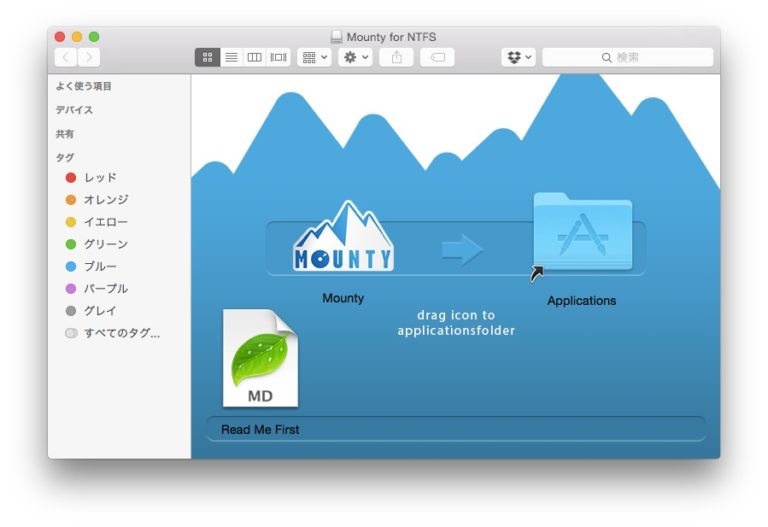

- #Readwrite ntfs osz how to#
- #Readwrite ntfs osz for mac#
- #Readwrite ntfs osz install#
- #Readwrite ntfs osz driver#
- #Readwrite ntfs osz manual#
#Readwrite ntfs osz manual#
Follow instructions from the manual for more details.
#Readwrite ntfs osz install#
The install process can be done from Linux or That is very useful inĬase you cannot boot from the CD/DVD drive. It is very easy to install SystemRescue on a USB stick. Want to backup the data stored on a Windows computer that cannot boot any more. You can use SystemRescue to backup data from an unbootable Windows computer, if you It is also possible to create custom versions of SystemRescue. It is possible to make custom versions of the system.įor example, you can add your own scripts, make an automatic restoration of the
Network tools (Samba, NFS, ping, nslookup, …): to backup your data across the networkīrowse the short system tools page for more details about the most important software included.īrowse the detailed package list for a full list of the packages. Rsync: very-efficient and reliable program that can be used for remote backups. Memtest: to test the memory of your computer (first thing to test when you have a crash or unexpected problems). Test-disk : tool to check and undelete partition, supports reiserfs, ntfs, fat32, ext3/ext4 and many others. Ntfs3g: enables read/write access to MS Windows NTFS partitions. File systems tools (for Linux and Windows filesystems): format, resize, and debug an existing partition of a hard disk. ddrescue : Attempts to make a copy of a block device that has hardware errors, optionally filling corresponding bad spots in input with user defined pattern in the copy. FSArchiver: flexible archiver that can be used as both system and data recovery software. GParted: GUI implementation using the GNU Parted library. GNU Parted: creates, resizes, moves, copies partitions, and filesystems (and more). Backup and transfer your data using rsync. Backup data from an unbootable Windows computer. Run your own scripts at start-up with autorun. 
Creating a backing-store to keep your modifications.Configuring SystemRescue with YAML files.Installing additional software packages with pacman.Mounting an NTFS partition with full Read-Write support.
#Readwrite ntfs osz how to#
How to install SystemRescue on an USB-stick. Quick start guide: please read this if this is theįirst time you are using this system recovery cd. Here are the most important pages: For the impatient: This project comes with good documentation. Click Complete button when selected files are saved to the ext4 partition. Brower partitions on your computer, select files and click Open button. Select files that you want to store to this Linux partition. System and Networking GuidesĪnd SystemRescue documentation here are other guides: Right-click empty area on the right panel and select Copy Files To Current Partition item. Vfat, ntfs), as well as network filesystems such as Samba and NFS. The kernel supports all important file systems (ext4, xfs, btrfs, Installation as it can be booted from a CD/DVD drive or It can be used for both LinuxĬomputers, and on desktops as well as servers. Such as GParted, fsarchiver, filesystem tools and basic tools (editors, midnightĬommander, network tools). It comes with a lot of Linux system utilities It aims to provide an easy way toĬarry out admin tasks on your computer, such as creating and editing the hardĭisk partitions. Projects exist since many years but was always experimental, and was claim to be not safe. Repairing your system and data after a crash. Introduction : Support of NTFS partition for linux has always been a problem. System rescue toolkit available as a bootable medium for administrating or #Readwrite ntfs osz driver#
We highly recommend paying for a third-party NTFS driver if you need to do this as the other solutions don’t work as well and are more work to set up.System Rescue Homepage About SystemRescueĭescription: SystemRescue (formerly known as SystemRescueCd) is a Linux In fact, we’ve had it corrupt data before. It isn’t guaranteed to work properly and could potentially cause problems with your NTFS file system. However, it’s off by default and requires some messing around in the terminal to enable it. Apple’s Experimental NTFS-Write Support: The macOS operating system includes experimental support for writing to NTFS drives.It’s slower than paid solutions and automatically mounting NTFS partitions in read-write mode is a security risk. Unfortunately, this take a bit of extra work to install, especially on Macs with the new System Integrity Protection feature, added in 10.11 El Capitan. Free Third-Party Drivers: There’s a free and open-source NTFS driver you can install on a Mac to enable write support.These are paid solutions, but they’re easy to install and should offer better performance than the free solutions below.
#Readwrite ntfs osz for mac#
Paid Third-Party Drivers: There are third-party NTFS drivers for Mac that you can install, and they’ll work quite well. There are several options for this, and you’ll need to choose one:






 0 kommentar(er)
0 kommentar(er)
